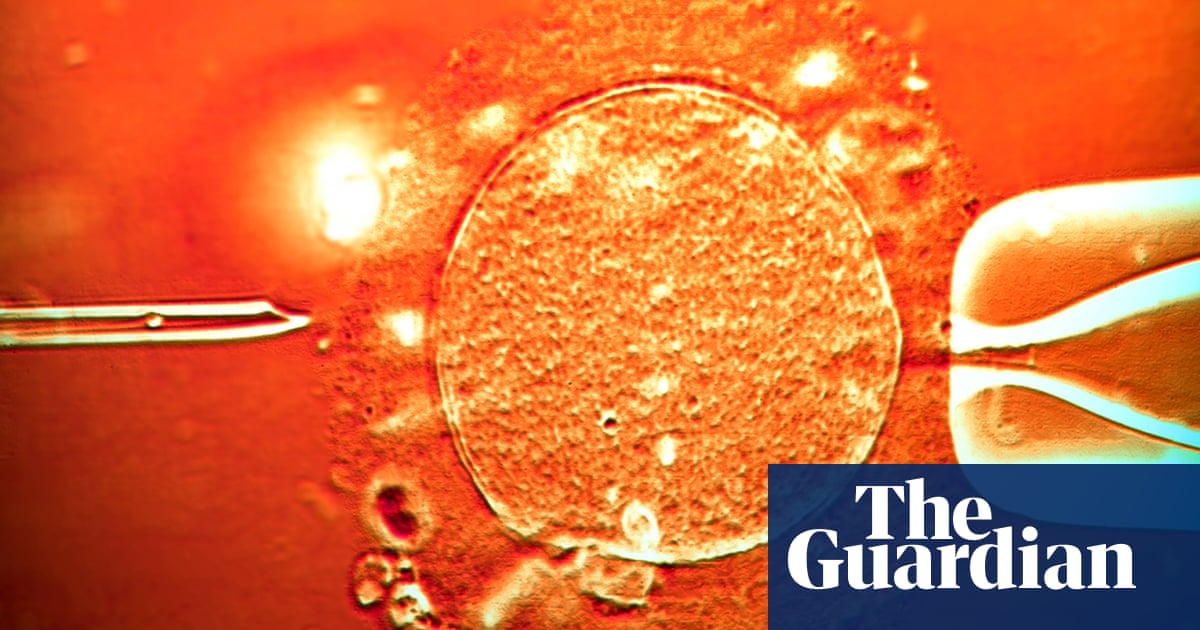The sperm of a man carrying a rare cancer-causing mutation was used to conceive at least 67 children, 10 of whom have since been diagnosed with cancer, in a case that has highlighted concerns about the lack of internationally agreed limits on the use of donor sperm.
Experts havepreviously warnedof the social and psychological risks of sperm from single donors being used to create large numbers children across multiple countries. The latest case, involving dozens of children born between 2008 and 2015, raises fresh concerns about the complexity of tracing so many families when a serious medical issue is identified.
“We need to have a European limit on the number of births or families for a single donor,” said Dr Edwige Kasper, a biologist at Rouen university hospital in France, who presented the case at the annual conference of the European Society of Human Genetics in Milan.
“We can’t do whole-genome sequencing for all sperm donors – I’m not arguing for that,” she added. “But this is the abnormal dissemination of genetic disease. Not every man has 75 children across Europe.”
The case came to light when two families independently contacted their fertility clinics after their children developed cancers that appeared to be linked to a rare genetic variant. The European Sperm Bank, which had supplied the sperm, confirmed that the variant in a gene called TP53 was present in some of the donor’s sperm.
The rare variant was not known to be linked to cancer at the time of donation in 2008, would not have been detectable using standard screening techniques, and the donor is understood to be in good health. However, analysis by Kasper’s lab concluded that the mutation was likely to cause Li-Fraumeni syndrome, one of the most severe inherited predispositions to cancer.
Kasper said: “I analysed the variant using population and patient databases, computer prediction tools and the results of functional trials and came to the conclusion that the variant was probably cancer-causing and that children born from this donor should receive genetic counselling.”
Simultaneously, a number of genetics and paediatric departments across Europe were investigating their own cases, leading to 67 children from 46 families in eight European countries being tested. The variant was found in 23 children, 10 of whom have been diagnosed with cancer, including cases of leukaemia and non-Hodgkin lymphoma.
Children with the risk gene are advised to be monitored with regular whole-body MRI scans, MRI scans of the brain and, as adults, of the breast and ultrasound examination of the abdomen.
The European Sperm Bank, which applies a worldwide limit of 75 families for each sperm donor, said more than 67 children had been conceived using the donor’s sperm, but that its policy was to not confirm exact numbers of children for a specific donor. It said all of the relevant clinics had been alerted.
Kasper said this remained a concern. “Is 67 the total? It’s a really good question that I’ve asked the sperm bank. They didn’t want to tell me the denominator of the births for this donor,” she said.
Prof Nicky Hudson, of De Montfort University in Leicester, said the case highlighted the complexity of the challenges that could arise when human gametes were shipped between countries and used for large numbers of recipients.
Sign up toFirst Edition
Our morning email breaks down the key stories of the day, telling you what’s happening and why it matters
after newsletter promotion
“The important issues at stake here relate to the large number of affected children – which would be limited if only used within one country according to local limits – and the challenge of tracing the families, who can now span multiple countries,” Hudson said.
“Whilst these kinds of cases have thankfully been rare, we need to consider ways to limit the possibility of this scenario becoming more frequent in future by coordinating international practice. At the very least we need better systems for tracking donor usage and of informing recipients of this.”
Julie Paulli Budtz, a spokesperson for the European Sperm Bank, said: “We are deeply affected by this case.” She said the donor had been thoroughly tested but that “it is scientifically simply not possible to detect disease-causing mutations in a person’s gene pool if you don’t know what you are looking for”.
She added: “We welcome continued dialogue on setting an internationally mandated family limit and have advocated for this on several occasions. This is also why we have proactively implemented our own international limit of 75 families per donor.”
